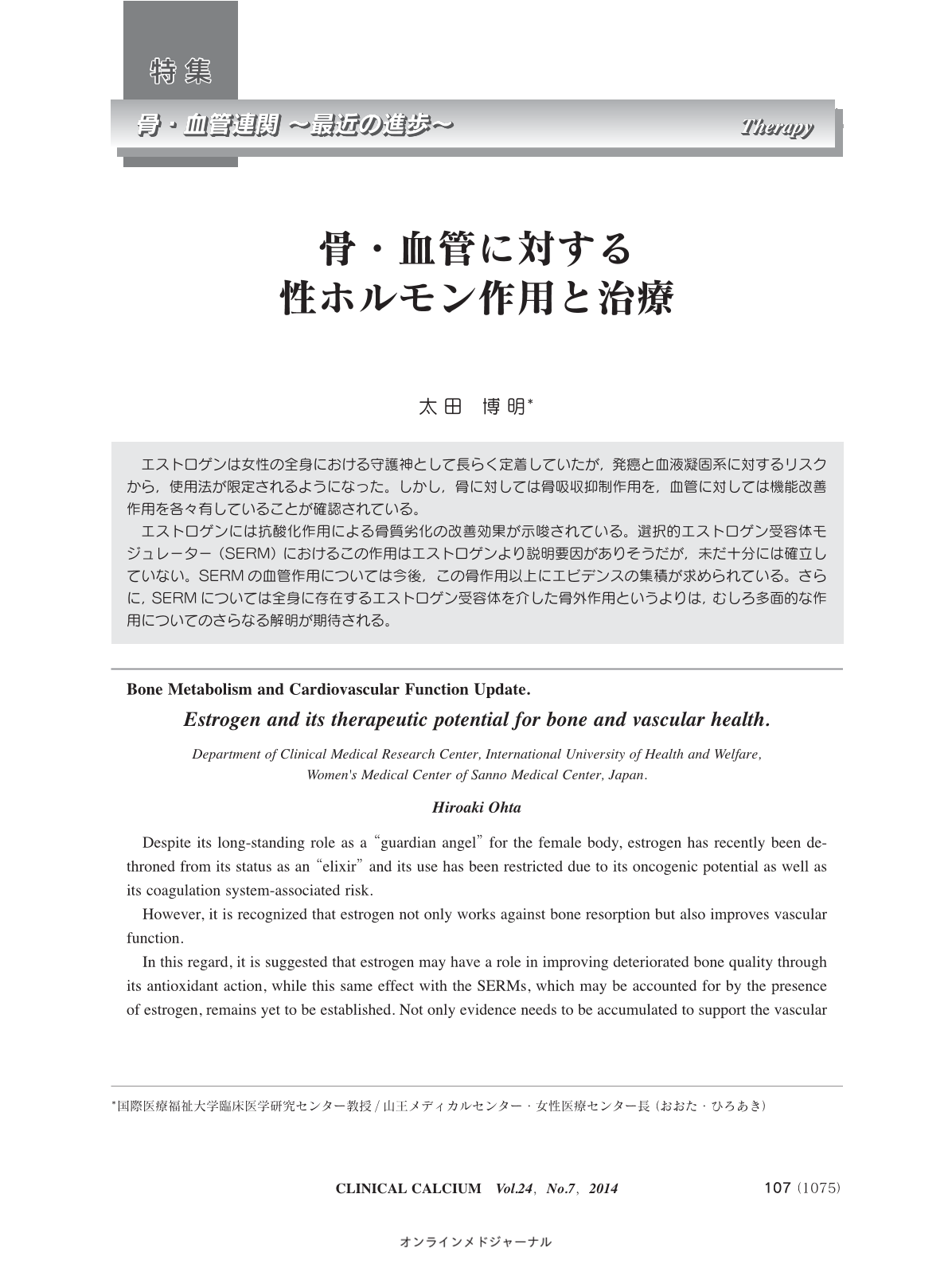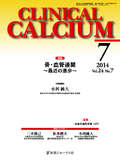Japanese
English
- 有料閲覧
- Abstract 文献概要
- 1ページ目 Look Inside
- 参考文献 Reference
エストロゲンは女性の全身における守護神として長らく定着していたが,発癌と血液凝固系に対するリスクから,使用法が限定されるようになった。しかし,骨に対しては骨吸収抑制作用を,血管に対しては機能改善作用を各々有していることが確認されている。 エストロゲンには抗酸化作用による骨質劣化の改善効果が示唆されている。選択的エストロゲン受容体モジュレーター(SERM)におけるこの作用はエストロゲンより説明要因がありそうだが,未だ十分には確立していない。SERMの血管作用については今後,この骨作用以上にエビデンスの集積が求められている。さらに,SERMについては全身に存在するエストロゲン受容体を介した骨外作用というよりは,むしろ多面的な作用についてのさらなる解明が期待される。
Despite its long-standing role as a “guardian angel” for the female body, estrogen has recently been dethroned from its status as an “elixir” and its use has been restricted due to its oncogenic potential as well as its coagulation system-associated risk. However, it is recognized that estrogen not only works against bone resorption but also improves vascular function. In this regard, it is suggested that estrogen may have a role in improving deteriorated bone quality through its antioxidant action, while this same effect with the SERMs, which may be accounted for by the presence of estrogen, remains yet to be established. Not only evidence needs to be accumulated to support the vascular effects of the SERMs, but their pleiotropic, rather than extra-skeletal, effects, as likely mediated by the estrogen receptors distributed throughout the body, remain to be elucidated.



